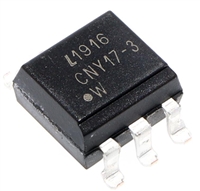| 是否Rohs认证: | 符合 | 生命周期: | Obsolete |
| 零件包装代码: | TSSOP | 包装说明: | TSSOP-14 |
| 针数: | 14 | Reach Compliance Code: | unknown |
| ECCN代码: | EAR99 | HTS代码: | 8542.39.00.01 |
| 风险等级: | 5.65 | 最大时钟频率: | 0.032 MHz |
| 信息访问方法: | I2C | JESD-30 代码: | R-PDSO-G14 |
| JESD-609代码: | e3 | 长度: | 5 mm |
| 湿度敏感等级: | 5 | 端子数量: | 14 |
| 计时器数量: | 1 | 最高工作温度: | 85 °C |
| 最低工作温度: | -40 °C | 封装主体材料: | PLASTIC/EPOXY |
| 封装代码: | TSSOP | 封装形状: | RECTANGULAR |
| 封装形式: | SMALL OUTLINE, THIN PROFILE, SHRINK PITCH | 峰值回流温度(摄氏度): | 260 |
| 认证状态: | Not Qualified | 座面最大高度: | 1.2 mm |
| 最大供电电压: | 5.5 V | 最小供电电压: | 4.5 V |
| 标称供电电压: | 5 V | 表面贴装: | YES |
| 技术: | CMOS | 温度等级: | INDUSTRIAL |
| 端子面层: | Matte Tin (Sn) | 端子形式: | GULL WING |
| 端子节距: | 0.65 mm | 端子位置: | DUAL |
| 处于峰值回流温度下的最长时间: | NOT SPECIFIED | 宽度: | 4.4 mm |
| uPs/uCs/外围集成电路类型: | TIMER, REAL TIME CLOCK | Base Number Matches: | 1 |
| 型号 | 品牌 | 获取价格 | 描述 | 数据表 |
| X1288V14Z | INTERSIL |
获取价格 |
2-Wire⑩ RTC Real Time Clock/Calendar/CPU Supe |

|
| X1288V14Z-2.7 | INTERSIL |
获取价格 |
2-Wire⑩ RTC Real Time Clock/Calendar/CPU Supe |

|
| X1288V14Z-2.7A | INTERSIL |
获取价格 |
2-Wire⑩ RTC Real Time Clock/Calendar/CPU Supe |

|
| X1288V14Z-4.5A | INTERSIL |
获取价格 |
2-Wire⑩ RTC Real Time Clock/Calendar/CPU Supe |

|
| X1288V14Z-4.5AT1 | RENESAS |
获取价格 |
1 TIMER(S), REAL TIME CLOCK, PDSO14, ROHS COMPLIANT, PLASTIC, TSSOP-14 |

|
| X12M288000L199 | AEL |
获取价格 |
Parallel - Fundamental Quartz Crystal, |

|
| X13005 | STMICROELECTRONICS |
获取价格 |
HIGH VOLTAGE FAST-SWITCHING NPN POWER TRANSISTOR |

|
| X130C | ETC |
获取价格 |
CRYSTAL |

|
| X130K | ETC |
获取价格 |
CRYSTAL OSCILLATOR 16.384000MHZ |

|
| X131310H | XFMRS |
获取价格 |
HDSL LINE DRIVER XFMR |

|
 压敏电阻器在直流电路中的过压保护应用探讨
压敏电阻器在直流电路中的过压保护应用探讨

 电感耐压值及其与电感大小的关系
电感耐压值及其与电感大小的关系

 CNY17F光耦合器:特性、应用、封装、引脚功能及替换型号解析
CNY17F光耦合器:特性、应用、封装、引脚功能及替换型号解析

 DS1307资料解析:特性、引脚说明、替代推荐
DS1307资料解析:特性、引脚说明、替代推荐
